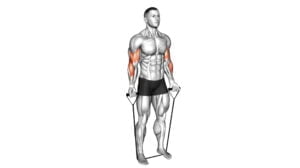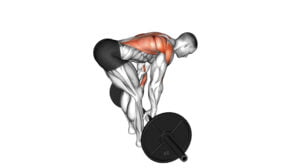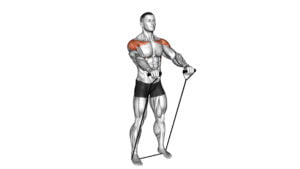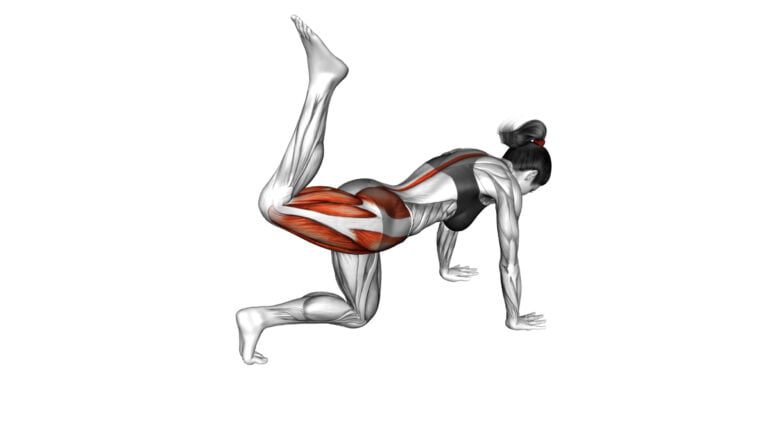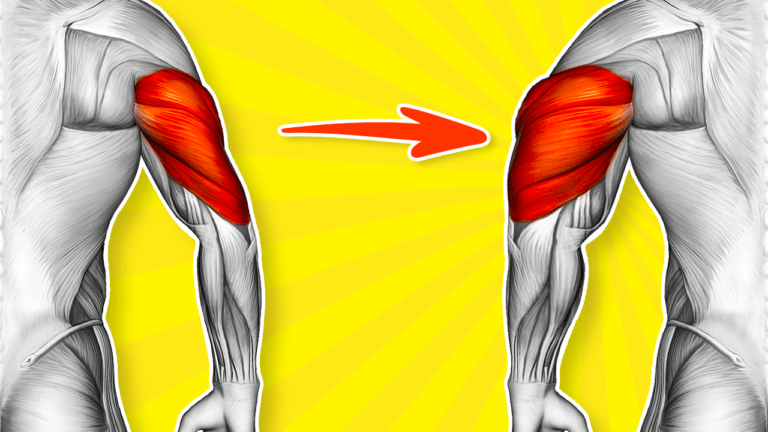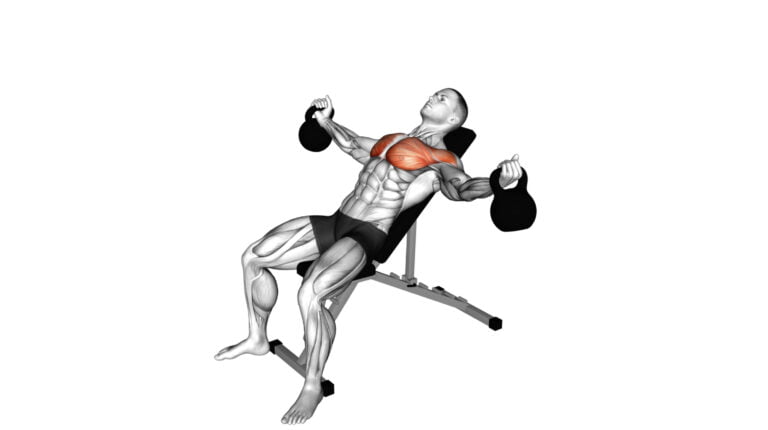10 Back Resistance Band Exercises to Strengthen Your Back Fast!
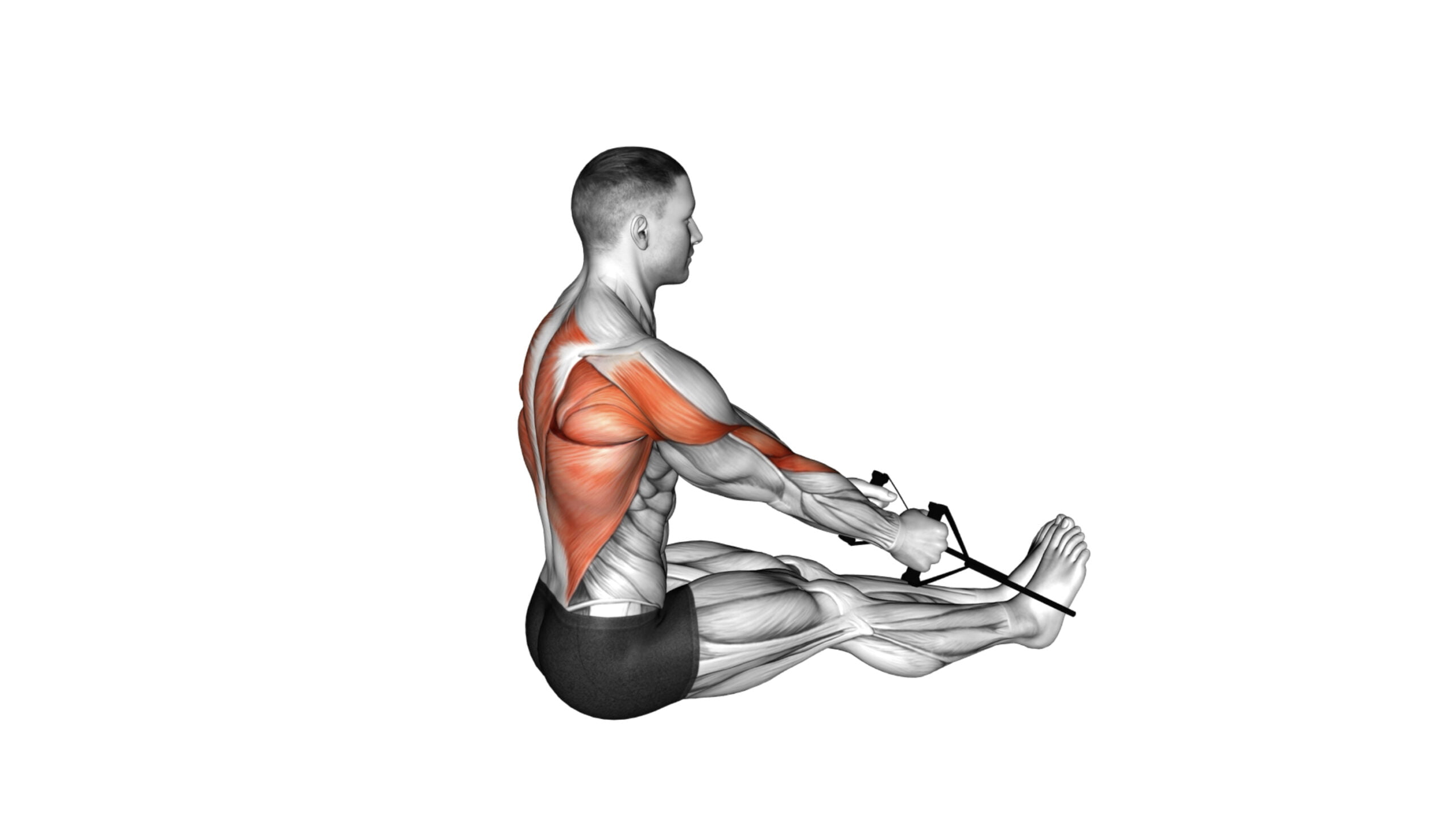
Strengthening your back is crucial, but many overlook the effectiveness of resistance bands in achieving a powerful and well-defined back. With over a decade of experience in fitness training, I’ve observed firsthand how incorporating Back Resistance Band Exercises can catalyze remarkable improvements in strength, posture, and overall physical health.
Resistance bands offer a unique advantage by providing constant tension throughout exercises, which free weights cannot always guarantee. This approach not only targets the major muscles like the lats and lower back but also engages the smaller stabilizing muscles for a comprehensive workout.
Most people are unaware that resistance band training can be as effective as using heavy machinery or free weights for enhancing back strength and muscle definition if done correctly.
Our exploration into 10 Effective Resistance Band Exercises For Strengthening Your Back delves into simple yet impactful movements designed to sculpt your physique from every angle without needing expensive equipment or gym memberships.

Stay tuned to transform your routine with these game-changer exercises. Let’s dive in!
Key Takeaways
- Resistance band exercises for the back can be as effective as using gym equipment, offering a versatile way to strengthen major and stabilizing muscles.
- These exercises improve flexibility, reduce the risk of muscle imbalances, and are safe for your spine and joints when done correctly.
- By following the recommended sets and reps for each exercise, you can progressively overload your muscles for continuous strength development.
- Keeping correct form is crucial; ensure your feet are shoulder – width apart, engage core muscles, and avoid rounding or hyperextending your back during workouts.
- The portability of resistance bands allows you to maintain strength training anywhere, making it convenient to incorporate into any fitness routine.
Benefits of Training Your Back with Resistance Bands

Training your back using resistance bands brings unparalleled versatility and safety to your workouts. Unlike traditional weightlifting, which can put a lot of strain on the spine and joints, resistance band exercises for the back distribute tension more evenly.
This means you can achieve a challenging workout without risking injury. With each pull and stretch, you engage not only the large muscles like the latissimus dorsi but also smaller stabilizing muscles around the shoulders and spine.
The result is a well-rounded strength that supports everything from daily activities to advanced athletic performance.
Incorporating back resistance band exercises into your routine also enhances flexibility and reduces the risk of muscle imbalances. By working through a full range of motion, these exercises ensure that all parts of your back get attention — from the upper trapezius muscles down to the lower lumbar region.
Plus, because resistance bands are lightweight and portable, you can maintain this aspect of your fitness regime anywhere—be it at home or while traveling—a real game-changer for those dedicated to consistent progress in their strength training journey.
The Top 10 Back Resistance Band Exercises
Strengthen your back with these top 10 resistance band exercises. Enhance your back muscles effectively using the recommended sets and reps for each exercise.
1. Resistance Band Cross Body Single Straight Arm Supinated Pulldown
Begin by securing the resistance band to a stable overhead anchor. This could be a pull-up bar or any sturdy, high point that can bear weight. Stand with your feet shoulder-width apart for balance and core stability.
Hold one end of the band with your arm fully extended upwards, palm facing forward (supinated grip). This is your starting position.
Pull the band down across your body towards the opposite hip. Keep your arm straight throughout this motion to ensure that lat muscles are properly engaged. Focus on moving through the elbow and shoulder blades while keeping your core tight and posture upright.
The controlled return to starting position will further engage these muscles, making every rep count towards building strength in your back and improving flexibility in your shoulders.
2. Resistance Band Kneeling Cross Body Single Straight Arm Supinated Pulldown
Kneel on the floor and secure one end of your resistance band overhead to a stable surface. Grab the free end with one hand, ensuring your palm faces upwards in a supinated grip. This setup targets your lats, biceps, and rear deltoids effectively.
Pull the band towards your hip while keeping your arm straight, focusing on engaging those back muscles fully. It’s crucial to maintain a tight core throughout this exercise to support your spine and enhance muscle activation.
Return the handle slowly to the starting position after each rep, controlling the movement both ways for maximal benefit. This exercise emphasizes tension across the latissimus dorsi without straining shoulder joints, making it ideal for building strength safely.
As you progress, increase resistance or reps according to principles of progressive overload for continuous improvement in back muscularity and function. Transitioning smoothly into our next move provides you an opportunity to work different areas of your back with variety—onto Resistance Band Kneeling High Low Anti Rotation Chop next.
3. Resistance Band Kneeling High Low Anti Rotation Chop
Maintain a kneeling position while holding the resistance band at chest level. Pull the band diagonally across your body, then extend your arms towards the ground in a controlled manner using core strength.
This exercise targets your obliques and stabilizing muscles.
Initiate by getting into a kneeling posture with an anchored resistance band and engage your core to resist rotation as you perform this movement to enhance stability and strength in your midsection and lower back.
4. Band bent-over row
The band bent-over row effectively targets the muscles in your back, including the latissimus dorsi and rhomboids. To perform this exercise, step onto the resistance band with both feet and grasp the handles or ends of the band.
Bend at your hips to bring your torso parallel to the ground while keeping your back straight. Pull the bands up toward your lower chest, leading with your elbows and squeezing your shoulder blades together at the top of the movement.
Lower back down with control and repeat for a challenging yet rewarding back workout.
5. Band Fixed Back Underhand Pulldown
Perform the band fixed back underhand pulldown by securing a resistance band to an overhead structure. Grasp the handles with an underhand grip and pull them down towards your chest while keeping your elbows close to your sides.
Engage your back muscles as you lower the handles, then slowly return them back up.
The band fixed back underhand pulldown targets the latissimus dorsi, biceps, and middle trapezius, helping in developing upper body strength while improving posture and shoulder stability.
6. Band Knelling Lat Pulldown
For the band kneeling lat pulldown, start by attaching the resistance band to a high anchor point. Kneel down and grasp the handles with an overhand grip, keeping your arms straight above your head.
Pull the bands downward towards your chest while squeezing your shoulder blades together. Slowly return to starting position and repeat for a complete set.
Engage your latissimus dorsi muscles throughout this exercise, strengthening and toning them effectively for improved back strength. The band kneeling lat pulldown is also beneficial in developing overall upper body stability and coordination.
Incorporating this exercise into your routine can contribute to enhanced posture and reduced risk of back injuries.
7. Band kneeling one arm pulldown
In the band kneeling one arm pulldown, grasp the resistance band with one hand and kneel onto one knee. Keep your back straight, engage your core, and pull the band down toward your shoulder while keeping your elbow close to your body.
Slowly return to the starting position and repeat for the desired number of reps before switching sides.
Engaging in this exercise can help strengthen your latissimus dorsi, teres major, and rhomboids while also improving unilateral strength and stability in the upper body. This movement is effective for targeting specific muscles in a controlled manner, making it a valuable addition to any back strengthening routine.
8. Band Standing Single Arm Twist Row
Transitioning from the one-arm pulldown, the band standing single arm twist row engages your back and core muscles. Begin by attaching a resistance band to a sturdy anchor at shoulder height.
Grasp the handle with one hand, stand facing the anchor point, and step away until you feel tension in the band. With knees slightly bent, initiate the movement by pulling the handle toward your torso while twisting your upper body to bring your elbow behind you.
Keep your core engaged throughout for stability.
9. Band straight back seated row
Sit on the floor with your legs straight out in front of you and a resistance band wrapped around the soles of your feet. Grasp the ends of the resistance band, keeping your arms straight with an overhand grip.
Slowly pull the band towards your chest, squeezing your shoulder blades together at the end of the movement. Hold for a moment before slowly returning to the starting position.
Engage your back muscles throughout this exercise to effectively strengthen and tone them. This exercise targets the latissimus dorsi, rhomboids, and trapezius while also engaging your biceps and forearms for stability and control.
10. Band seated row
Sit on the floor with your legs extended in front and loop the resistance band around the soles of your feet, holding each end firmly. Keep your back straight, engage your core, and pull the resistance band toward you, bringing your elbows back and squeezing your shoulder blades together at the end of the movement.
Slowly release and repeat for a targeted upper back workout.
To maximize effectiveness, focus on maintaining proper form throughout each repetition by keeping a slight bend in your elbows and avoiding overarching or rounding of the back. This exercise engages key muscles like the latissimus dorsi and rhomboids to promote overall back strength and stability.
Recommended Sets And Reps

Perform 3 sets of 8-12 reps for each exercise. Adjust the resistance band tension to ensure that the final few reps are challenging but still achievable with good form. Take a rest period of 30-60 seconds between sets to allow for adequate recovery while maintaining intensity.
Remember to focus on controlled movements and proper technique throughout each set, aiming for a full range of motion to maximize the effectiveness of your back workout.
Tips for Proper Form and Safety with Resistance Band Back Exercises
Keep your feet shoulder-width apart and flat on the floor. Engage your glutes, hamstrings, and core to maintain a stable base while performing the exercises. Ensure that your back is in a neutral position to avoid hyperextending or rounding during movements.
Maintain proper scapular retraction and depression throughout each movement to protect against shoulder injuries. Be mindful of overusing the neck muscles; keep them relaxed and in a natural position.
Always start with light resistance bands before progressing to heavier ones for safety and effectiveness.
Conclusion

Strengthen your back with these 10 effective resistance band exercises. Enhance your practical knowledge through easy-to-implement, efficient strategies. Applying these exercises can lead to significant improvements in back strength and overall fitness.
Keep pushing forward and strive for a stronger, healthier back. Explore further guidance on resistance band exercises to deepen your understanding of this effective training method.
FAQs
1. What are resistance band exercises for the back?
Resistance band exercises for the back strengthen muscles by using bands to create tension. These include pull-ups, deadlifts, and rows that target your upper and lower back muscles.
2. Can I use resistance bands for pull-ups?
Yes, you can use resistance bands to perform assisted pull-ups. The band helps lift your body, making the exercise more manageable while still working your back and upper arm bones.
3. How do resistance bands help with deadlifts?
Incorporating resistance bands into deadlifts adds extra tension at the top of the lift. This challenges your lower abdomen, pecs, and rear delts more than traditional weight training alone.
4. Can beginners do these exercises?
Absolutely! Beginners can start with basic exercises like band rows or assisted chin-ups to build strength gradually in a safe manner focusing on proper form.
5. Are there specific benefits of doing lat pulldowns with a resistance band?
Performing lat pulldowns with a resistance band from a standing position targets not just the lats but also engages core stabilization muscles like the rectus abdominis and quadratus lumborum.
6. How often should I do these exercises for best results?
For optimal strengthening and endurance benefits, aim to incorporate these resistant band back exercises into your routine 2-3 times per week allowing time for muscle recovery between sessions.

Author
Years ago, the spark of my life’s passion ignited in my mind the moment I stepped into the local gym for the first time. The inaugural bead of perspiration, the initial endeavor, the very first surge of endorphins, and a sense of pride that washed over me post-workout marked the beginning of my deep-seated interest in strength sports, fitness, and sports nutrition. This very curiosity blossomed rapidly into a profound fascination, propelling me to earn a Master’s degree in Physical Education from the Academy of Physical Education in Krakow, followed by a Sports Manager diploma from the Jagiellonian University. My journey of growth led me to gain more specialized qualifications, such as being a certified personal trainer with a focus on sports dietetics, a lifeguard, and an instructor for wellness and corrective gymnastics. Theoretical knowledge paired seamlessly with practical experience, reinforcing my belief that the transformation of individuals under my guidance was also a reflection of my personal growth. This belief holds true even today. Each day, I strive to push the boundaries and explore new realms. These realms gently elevate me to greater heights. The unique combination of passion for my field and the continuous quest for growth fuels my drive to break new ground.





